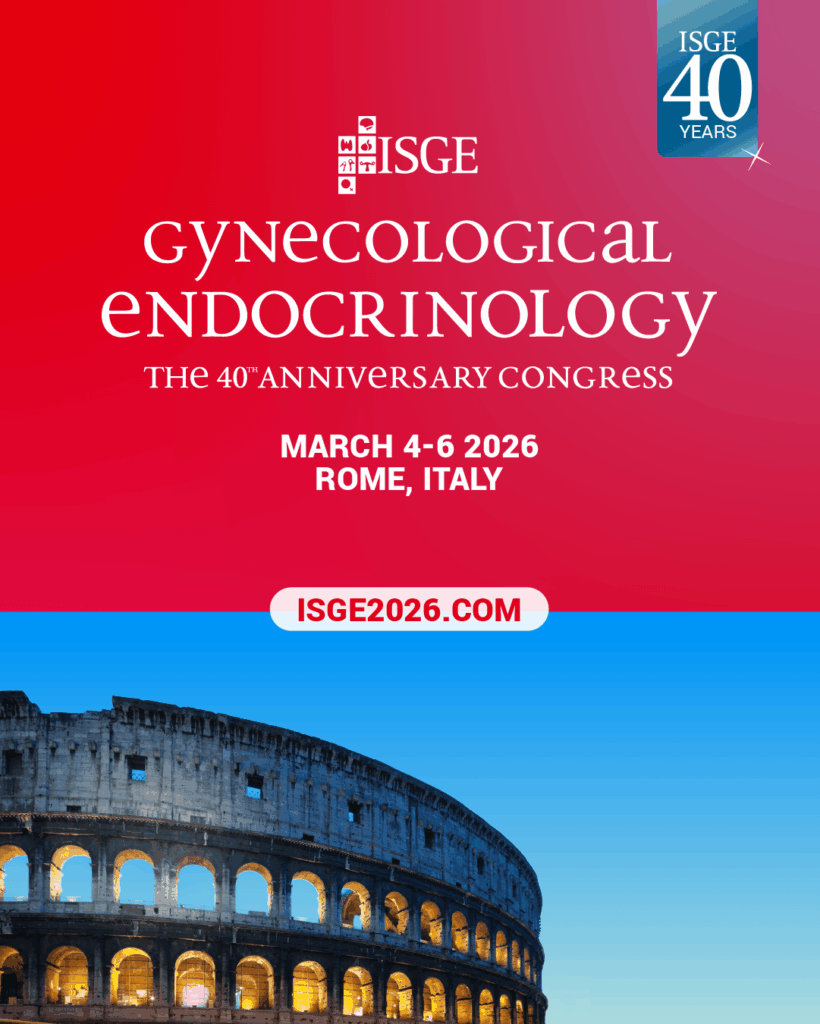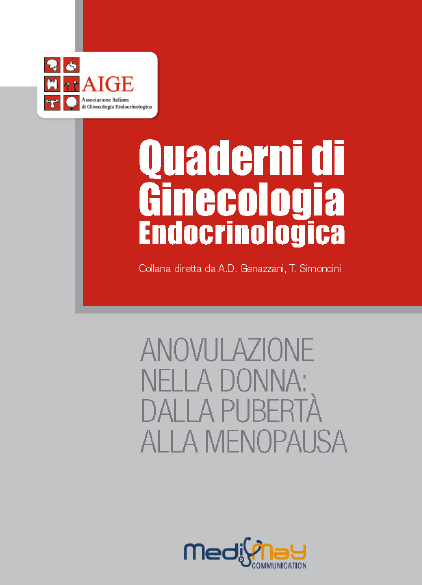-
Christian Gnoth, Judith Roos, David Broomhead, Julia Schiffner, Erhard Godehardt, Günter Freundl, Sarah Johnson
Antimullerian hormone levels and numbers and sizes of antral follicles in regularly menstruating women of reproductive age referenced to true ovulation day
Fertil Steril 2015, 104: 1535-1543Abstract
Objective: To assess menstrual cycle antim€ullerian hormone (AMH) levels in reproductive age women and which/how many follicles substantially produce AMH.
Design: Prospective study of menstruating women using mixed-effects models to analyze AMH variability and correlation of follicle counts/size classes to AMH levels.
Setting: Clinic.
Patient(s): Regular menstruating women with ovulatory cycles (n = 40, aged 18–37 years) and no known subfertility.
Intervention(s): Women collected daily urine samples and visited the study center for blood samples/transvaginal ultrasound during one complete menstrual cycle (visits were every 2 days; daily from follicle size >16 mm until postovulation).
Main Outcome Measure(s): AMH levels throughout the menstrual cycle, correlated with antral follicles as observed by ultrasound and identification of follicles producing AMH.
Results: Of all antral follicles visible by high-resolution ultrasound, AMH is produced substantially only by follicles up to 7 mm in diameter. For women with basal AMH >1 ng/mL, mean AMH concentrations vary across ovulatory menstrual cycles, showing a statistically significant decrease from _5 to 2 days after objective ovulation; significantly lower mean luteal AMH levels (-7.59% to mean follicular AMH) are detected. The number of antral follicles can be estimated from AMH (ng/mL) levels using the modified Beckman Coulter Generation II AMH assay for any day of the follicular phase.
Conclusion(s): AMH concentrations vary across ovulatory menstrual cycles, showing a significant periovulatory decrease. The number of small antral follicles can be estimated from preovulatory AMH levels with relevance for
patient management. -
Maria P.H. Koster, Marlieke A. de Wilde, Susanne M. Veltman-Verhulst, Michiel L. Houben, Peter G.J. Nikkels, Bas B. van Rijn, Bart C.J.M. Fauser
Placental characteristics in women with polycystic ovary syndrome
Hum. Reprod. (2015) 30 (12): 2829-2837Abstract
STUDY QUESTION Are macroscopic and microscopic placental characteristics in a heterogeneous group of women diagnosed with polycystic ovary syndrome (PCOS) different from those of a low-risk general population?
SUMMARY ANSWER Women with PCOS have significantly different microscopic placental characteristics compared with control women, independently from pregnancy complications.
WHAT IS KNOWN ALREADY Non-obese women with PCOS who conceived spontaneously have a significantly reduced placental volume and weight, with more chronic villitis and intervillositis compared with healthy controls.
STUDY DESIGN, SIZE, DURATION A subset of a large prospective cohort study of pregnant women with PCOS was used. Healthy (low-risk) women who delivered at term after an uncomplicated pregnancy were used as the reference population. The placentas of 73 women with PCOS were analysed and compared with 209 placentas of healthy women.
PARTICIPANTS/MATERIALS, SETTING, METHODS Placentas were collected after delivery from women with PCOS who were followed from prior to conception until delivery. The placentas were macroscopically and microscopically analysed and compared with placentas of healthy women with either a spontaneous start of labour who delivered at term or who had an elective Caesarean section.
MAIN RESULTS AND THE ROLE OF CHANCE After adjusting for potential confounders, placentas from women with PCOS showed more chorioamnionitis (P < 0.001), funisitis (P = 0.019), villitis (P = 0.045), thrombosis (P = 0.018), infarction (P = 0.010), villous immaturity (P = 0.009) and nucleated fetal red blood cells (P < 0.001). In a subgroup analysis, among women with and without pregnancy complications within the PCOS group, only the occurrence of thrombosis was increased in pregnancies complicated by pregnancy-induced hypertension or pre-eclampsia (30%, versus 0% in gestational diabetes pregnancies and 13% in uncomplicated pregnancies; P = 0.008). LIMITATIONS, REASONS FOR CAUTION There might be a small proportion of women with PCOS in the reference group, since this group was not screened for PCOS. As a result, the observed difference may be an underestimation of the true difference. Placentas were stored for up to 72 h at 4°C, this is common practice but some degenerative changes cannot be ruled out absolutely. Also, there is possibility that baseline differences between the groups may in part explain some of the differences in placental pathology.
WIDER IMPLICATIONS OF THE FINDINGS Our findings suggest that, in general, women with PCOS can have placental alterations associated with an increased hypoxic state, which seems not to be caused by the increased incidence of pregnancy complications. -
R. I. Pereira, B. A. Casey, T. A. Swibas, C. B. Erickson, P. Wolfe, E. Van Pelt
Timing of Estradiol Treatment After Menopause May Determine Benefit or Harm to Insulin Action
J Clin Endocrinol Metab 100: 4456–4462, 2015Abstract
Context: Type 2 diabetes (T2D) is reduced in postmenopausal women randomized to estrogen based hormone therapy (HT) compared with placebo. Insulin sensitivity is a key determinant of T2D risk and overall cardiometabolic health, and studies indicate that estradiol (E2) directly impacts insulin action.
Objective: We hypothesized that the timing of E2 administration after menopause is an important determinant of its effect on insulin action.
Design: We performed a randomized, crossover, placebo-controlled study.
Participants: Study participants were early postmenopausal (EPM;≤6 years of final menses; n=22) and late postmenopausal (LPM; ≥10 years since last menses; n = 24) women naive to HT.
Intervention: Study interventions included short-term (1 week) transdermal E2 and placebo.
Main Outcomes and Measures: The study’s main outcome was insulin-mediated glucose disposal (glucose disposal rate [GDR]) via hyperinsulinemic-euglycemic clamp.
Results: Compared to EPM women, LPM women were older (mean _ SD; 63 _ 3 vs 56 _ 4 years, P < ± .05) and more years past menopause (12 ± 2 vs 3 ± 2 years, P < .05). Body mass index (24 ± 3 vs 25±7 kg/m2) and fat mass (25±7 vs 23±6 kg) did not differ between groups, but fat-free mass (FFM) was lower in LPM women compared to EPM women (40 ± 4 vs 43 ± 5 kg, P < .05). Baseline GDR did not differ between groups (11.7 ± 2.8 vs 11.5 ± 2.9 mg/kg FFM/min). In support of our hypothesis, 1 week of E2 decreased GDR in LPM women compared to an increase in EPM women (+0.44 ± 1.7 vs -0.76 ± 2.1 mg/kg FFM/min, P < .05). Conclusions: There was not an apparent decline in GDR with age or time since menopause per se. However, E2 action on GDR was dependent on time since menopause, such that there was an apparent benefit early (≤6 years) compared to harm later (≥10 years) in menopause. E2-mediated effects on insulin action may be one mechanism by which HT reduces the incidence of T2D in early postmenopausal women. -
Heidi Vanden Brink, David Mark Robertson, Hyun Lim, Chel Lee, Donna Chizen, Guy Harris, Georgina Hale, Henry Burger, Angela Baerwald
Associations Between Antral Ovarian Follicle Dynamics and Hormone Production Throughout the Menstrual Cycle as Women Age
J Clin Endocrinol Metab 100: 4553–4562, 2015Abstract
Background: The physiological origins of age-related changes in hormone production during the menstrual cycle are uncertain.
Objective: The objective of the study was to test the hypothesis that changes in antral follicle
dynamics are associated with changes in hormone production as women age.
Methods: A prospective, observational study was conducted in ovulatory women of midreproductive age (MRA; 18–35 y; n = 10) and advanced reproductive age (ARA; 45–55 y; n = 20). The numbers and diameters of all follicles of 2 mm or greater were quantified ultrasonographically every 1–3 days foroneinterovulatory interval; thegrowthprofiles of individually identified follicles of 4 mm or greater were tabulated. Blood samples were assayed for FSH, LH, estradiol, progesterone, inhibin A and B, and anti-Mullerian hormone.
Results: Fifty percent of women in both the MRA and ARA groups developed one to two lutealphase dominant follicles (LPDFs). MRA women with typical LPDFs had greater luteal-phase inhibin B (44.2 vs 17.0 ng/L) and estradiol (91.3 vs 51.7 ng/L) compared with those without LPDFs (P < .05). Luteal-phase estradiol was greater (184 vs 79 ng/L), inhibin B was greater (25.3 vs 12.7 ng/L), and progesterone was lower (6.98 vs 13.8 µg/L) in ARA women with atypical vs no LPDFs (P < .01). Conclusion: Changes in antral follicle dynamics are associated with changes inhormoneproduction as women age. The development of LPDFs in women of MRA was associated with elevated luteal phase estradiol. A similar but exaggerated elevation in late luteal-early follicular-phase estradiol, accompanied by lower progesterone, was observed in ARA women with atypically large and persistent LPDFs -
Benjamin Fenske,Hanna Kische, Stefan Gross, Henri Wallaschofski, Henry Völzke, Marcus Dörr, Matthias Nauck, Brian G. Keevil, Georg Brabant, Robin Haring
Endogenous Androgens and Sex Hormone–Binding Globulin in Women and Risk of Metabolic Syndrome and Type 2 DiabetesJ Clin Endocrinol Metab 100: 4595–4603, 2015
Abstract
Context and Objectives: The association of endogenous androgens and sex hormone–binding globulin (SHBG) with metabolic syndrome (MetS) and type 2 diabetes mellitus (T2DM) mostly 23562 refers to small and selected study samples with immunoassay-based measurements. Thus, we investigated the association of hormone levels with MetS and T2DM in women from a large population-based sample.
Design, Setting, and Participants: A total of 2077 women from the Study of Health in Pomerania were assessed at baseline (N = 3160, 1997–2001) and 5-year follow-up (N = 1711, 2002–2006).
Main Outcomes and Measures: We investigated associations of total testosterone (T) and androstenedione measured by liquid chromatography-tandem mass spectrometry, SHBG by immunoassay, and free T and free androgen index with MetS and T2DM.
Results: Baseline prevalence of MetS and T2DM was 23.1% (N _ 365) and 9.5% (N _ 196), with an incidence of 17.7 and 7.0 per 1.000 person-years, respectively. Cross-sectional analyses yielded inverse associations of SHBG with MetS (relative risk [RR], 0.67; 95% confidence interval [CI], 0.60–0.74) and T2DM (RR, 0.61; 95% CI, 0.50–0.74) after multivariable adjustment. In longitudinal analyses, only age-adjusted models showed an inverse association of baseline SHBG with incident MetS (RR, 0.61; 95% CI, 0.51–0.73) and T2DM (RR, 0.58; 95% CI, 0.43–0.78). Multivariable-adjusted models stratified by menopausal status revealed an inverse association between SHBGand incident MetS risk in postmenopausal women (RR, 0.65; 95% CI, 0.51–0.81).
Conclusions: This longitudinal population-based study revealed independent inverse associations of SHBG with MetS and T2DM, suggesting low SHBG as a potential risk marker for cardiometabolic morbidity, especially among postmenopausal women -
Matheus Roque, Ana C. I. Tostes, Marcello Valle, Marcos Sampaio, Selmo Geber
Letrozole versus clomiphene citrate in polycystic ovary syndrome: systematic review and meta-analysis Gynecol Endocrinol, 2015; 31(12): 917–921Abstract
The objective of the present systematic review and meta-analysis was to examine the literature and to identify the results of randomized controlled trials (RCTs) comparing the use of letrozole to clomiphene citrate (CC) for ovulation induction in patients with polycystic ovary syndrome (PCOS). An exhaustive electronic literature search was performed using the MEDLINE and EMBASE databases until October 2014. Seven prospective RCTs comparing the use of letrozole to CC in PCOS patients met the inclusion criteria. Overall, the seven included studies accounted for 1833 patients (906 in the letrozole group and 927 in the CC group) and for 4999 ovulation induction cycles (2455 in the letrozole group and 2544 in the CC group). Five of the included
studies reported data on live birth rates. There was a statistically significant increase in the live birth and pregnancy rates in the letrozole group when compared to the CC group, with a relative risk (RR)¼1.55 (95% confidence interval (CI): 1.26–1.90; I2¼0%) and RR¼1.38 (95% CI: 1.05–1.83; I2¼61%), respectively. There were no differences in the multiple pregnancy, miscarriage and ovulation rates between the two groups. Our study found that letrozole is superior to CC when considering the live birth and pregnancy rates in patients with PCOS. -
Fiona E. Watt
Hand osteoarthritis, menopause and menopausal hormone therapy
Maturitas 83, 13-18, 2016Abstract
Hand osteoarthritis (OA) is one of the commonest musculoskeletal conditions, primarily affecting women over the age of 50, typically around the age of the menopause. Symptomatic disease can give rise to substantial pain, impairment of hand function and quality of life, leading to significant socioeconomic cost. There is currently no disease-modifying therapy, representing a huge unmet clinical need. The evidence for a relationship between hand OA and the menopause is summarised. Whether there is evidence for an effect of menopausal hormonal therapy on the incidence, prevalence or severity of symptomatic hand OA is critically reviewed, and gaps in our knowledge identified. Lastly, the potential mechanisms by which estrogen, or newer agents such as SERMs, might act to interfere with disease pathogenesis are overviewed. The need for specifically designed, controlled trials of agents in cohorts with symptomatic hand OA, refractory to standard symptomatic management is highlighted.
-
Madeleine Zetterberg
Age-related eye disease and gender
Maturitas 83, 19-26, 2016Abstract
Worldwide, the prevalence of moderate to severe visual impairment and blindness is 285 millions, with 65% of visually impaired and 82% of all blind people being 50 years and older. Meta-analyses have shown that two out of three blind people are women, a gender discrepancy that holds true for both developed and developing countries. Cataract accounts for more than half of all blindness globally and gender inequity in access to cataract surgery is the major cause of the higher prevalence of blindness in women. In addition to gender differences in cataract surgical coverage, population-based studies on the prevalence of lens opacities indicate that women have a higher risk of developing cataract. Laboratory as well as epidemiologic studies suggest that estrogen may confer antioxidative protection against cataractogenesis, but the withdrawal effect of estrogen in menopause leads to increased risk of cataract in women. For the other major age-related eye diseases; glaucoma, age-related macular degeneration (AMD) and diabetic retinopathy, data are inconclusive. Due to anatomic factors, angle closure glaucoma is more common in women, whereas the dominating glaucoma type; primary open-angle glaucoma (POAG), is more prevalent in men. Diabetic retinopathy also has a male predominance and vascular/circulatory factors have been implied both in diabetic retinopathy and in POAG. For AMD, data on gender differences are conflicting although some studies indicate increased prevalence of drusen and neovascular AMD in women. To conclude, both biologic and socioeconomic factors must be considered when investigating causes of gender differences in the prevalence of age-related eye disease.
-
Erika Borkoles, Sean Carroll, Peter Clough, Remco C.J. Polman,
Effect of a non-dieting lifestyle randomised control trial onpsychological well-being and weight management in morbidly obesepre-menopausal women
Maturitas 83 (2016) 51–58 (download)Abstract
Objective: This study examined the effects of a non-dieting lifestyle intervention approach for morbidlyobese women designed in the framework of the self-determination theory (SDT) and Health at Every Sizeon weight maintenance and psychological functioning.
Participants and design: Predominantly white (97%), morbidly obese (BMI ≥ 35 kg m−2with at least oneco-morbid condition or a BMI ≥ 40 kg m−2) pre-menopausal women (N = 62), aged between 24 and 55years were initially randomly assigned to 12 weeks of lifestyle intervention (IIG) or delayed start controlgroup (DSCG). The program consisted of 3 months intensive lifestyle intervention followed by 9 monthmaintenance phase. The DSCG group commenced the program after 3 months.
Results and conclusions: Initially, the IIG showed a significant decrease in body weight (baseline to end ofthe RCT phase) compared with a significant increase in the DSCG group. However, no significant changes inweight status were evident in either group at 12 months compared with baseline. The 3-month intensiveintervention resulted in significantly improved psychological functioning in both groups, which weremaintained at 12 months. The study provides additional support for a non-dieting, theory-based, lifestyleapproach to weight management and psychological well-being among morbidly obese females.
Abstract selezionati
-
Christian Gnoth, Judith Roos, David Broomhead, Julia Schiffner, Erhard Godehardt, Günter Freundl, Sarah Johnson
Antimullerian hormone levels and numbers and sizes of antral follicles in regularly menstruating women of reproductive age referenced to true ovulation day
Fertil Steril 2015, 104: 1535-1543 -
Maria P.H. Koster, Marlieke A. de Wilde, Susanne M. Veltman-Verhulst, Michiel L. Houben, Peter G.J. Nikkels, Bas B. van Rijn, Bart C.J.M. Fauser
Placental characteristics in women with polycystic ovary syndrome
Hum. Reprod. (2015) 30 (12): 2829-2837 -
R. I. Pereira, B. A. Casey, T. A. Swibas, C. B. Erickson, P. Wolfe, E. Van Pelt
Timing of Estradiol Treatment After Menopause May Determine Benefit or Harm to Insulin Action
J Clin Endocrinol Metab 100: 4456–4462, 2015 -
Heidi Vanden Brink, David Mark Robertson, Hyun Lim, Chel Lee, Donna Chizen, Guy Harris, Georgina Hale, Henry Burger, Angela Baerwald
Associations Between Antral Ovarian Follicle Dynamics and Hormone Production Throughout the Menstrual Cycle as Women Age
J Clin Endocrinol Metab 100: 4553–4562, 2015 -
Benjamin Fenske,Hanna Kische, Stefan Gross, Henri Wallaschofski, Henry Völzke, Marcus Dörr, Matthias Nauck, Brian G. Keevil, Georg Brabant, Robin Haring
Endogenous Androgens and Sex Hormone–Binding Globulin in Women and Risk of Metabolic Syndrome and Type 2 DiabetesJ Clin Endocrinol Metab 100: 4595–4603, 2015
-
Matheus Roque, Ana C. I. Tostes, Marcello Valle, Marcos Sampaio, Selmo Geber
Letrozole versus clomiphene citrate in polycystic ovary syndrome: systematic review and meta-analysis Gynecol Endocrinol, 2015; 31(12): 917–921 -
Fiona E. Watt
Hand osteoarthritis, menopause and menopausal hormone therapy
Maturitas 83, 13-18, 2016 -
Madeleine Zetterberg
Age-related eye disease and gender
Maturitas 83, 19-26, 2016 -
Erika Borkoles, Sean Carroll, Peter Clough, Remco C.J. Polman,
Effect of a non-dieting lifestyle randomised control trial onpsychological well-being and weight management in morbidly obesepre-menopausal women
Maturitas 83 (2016) 51–58 (download)






